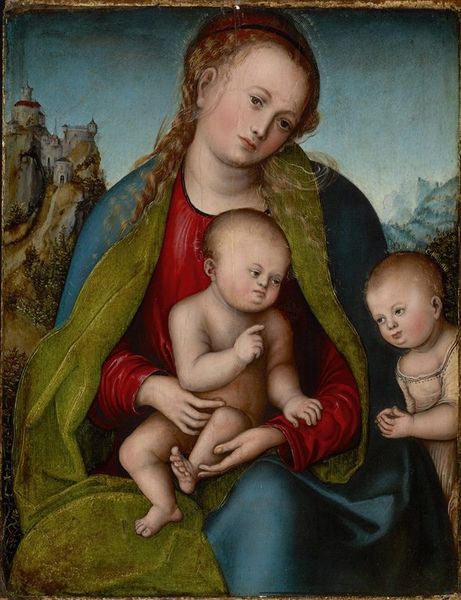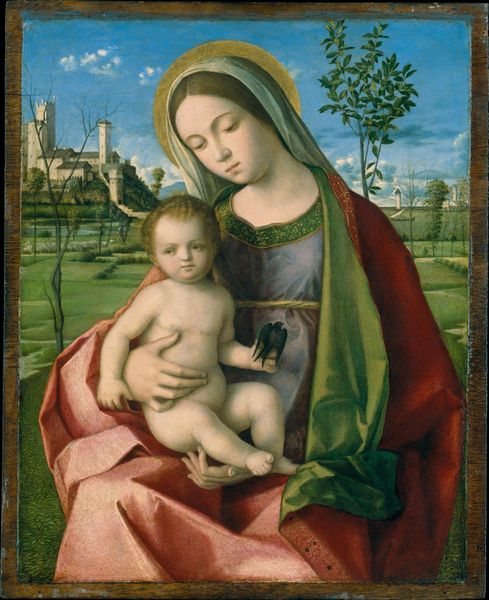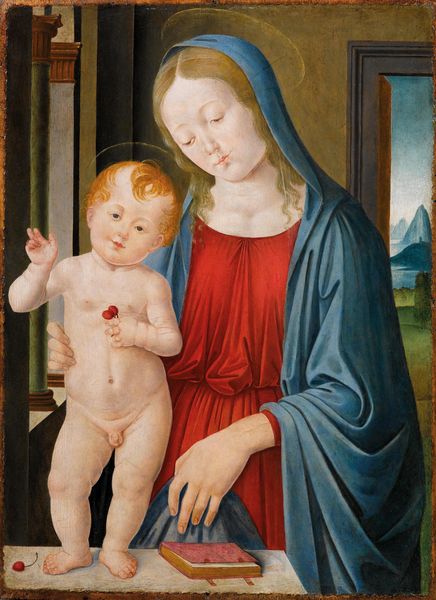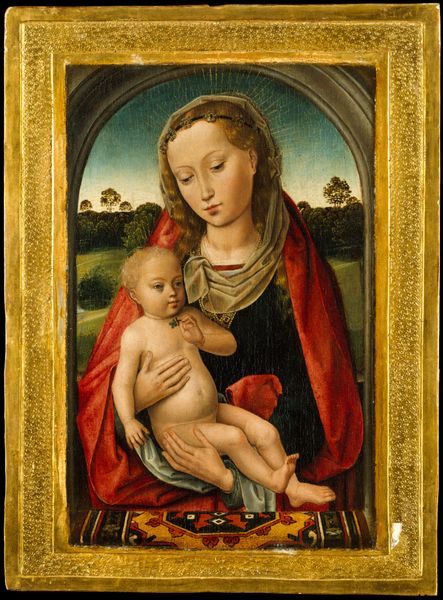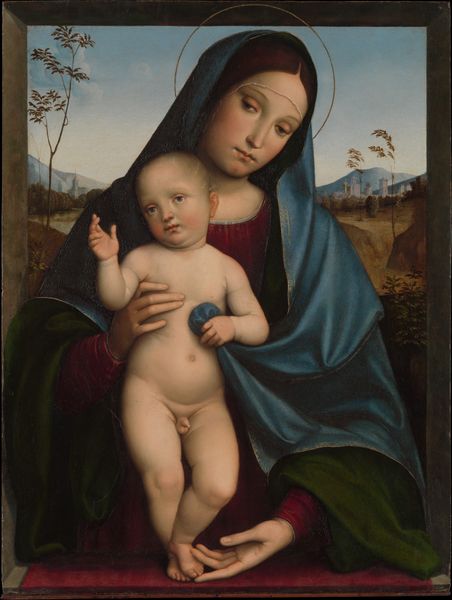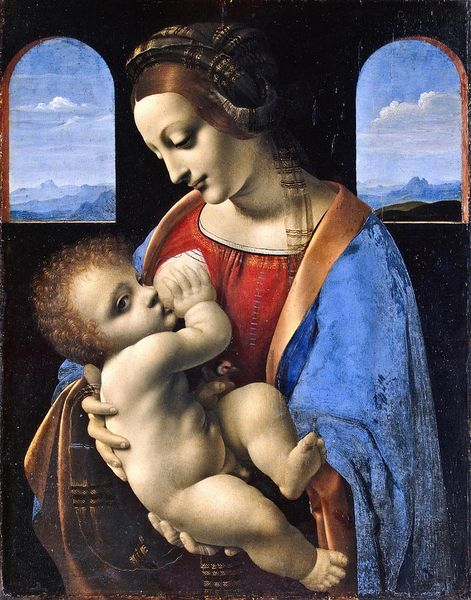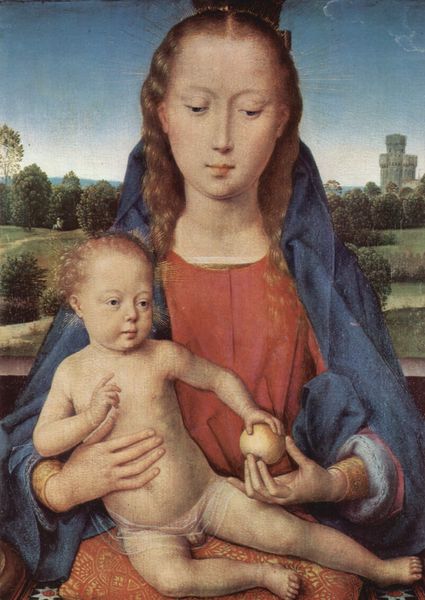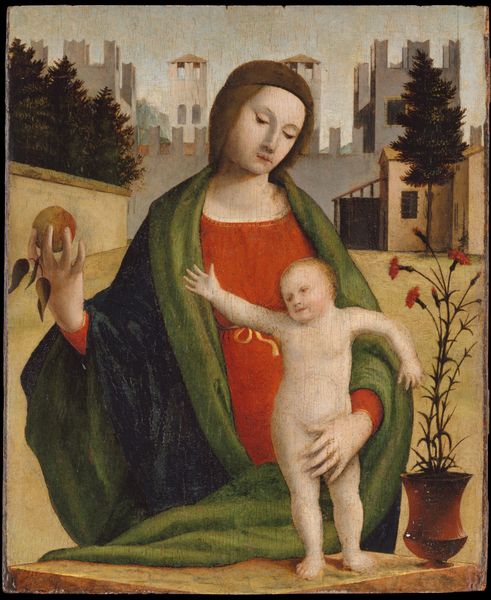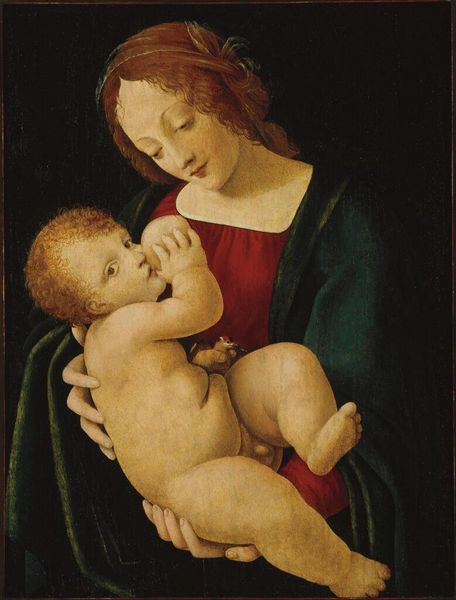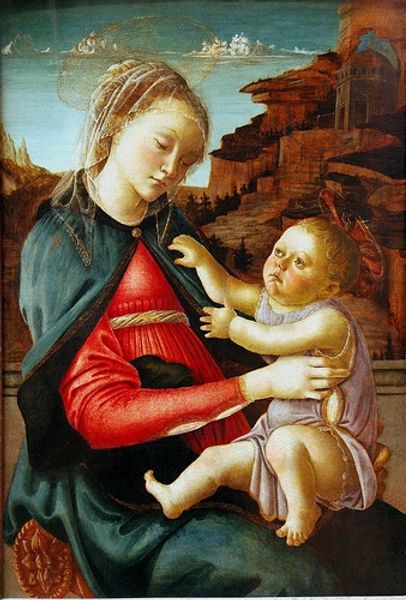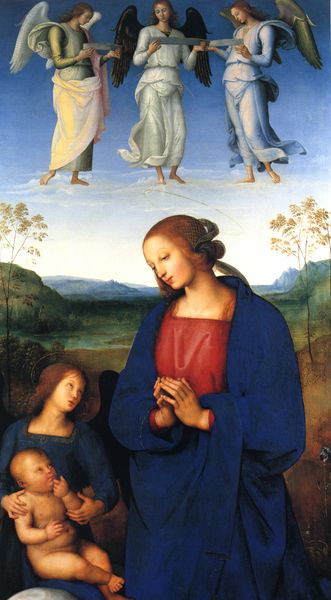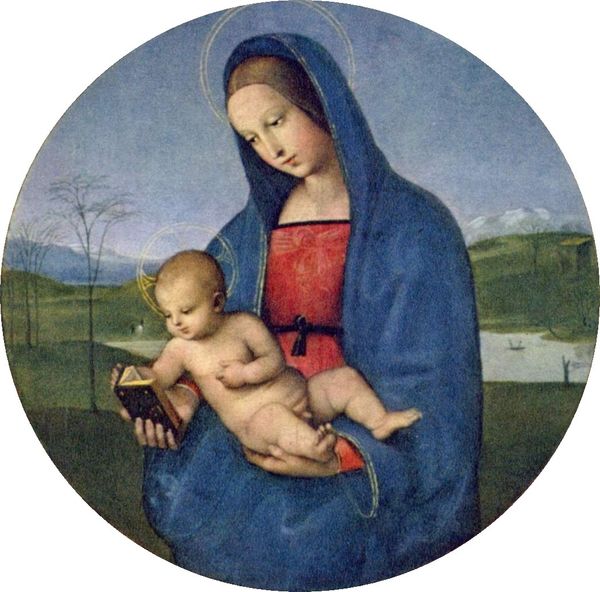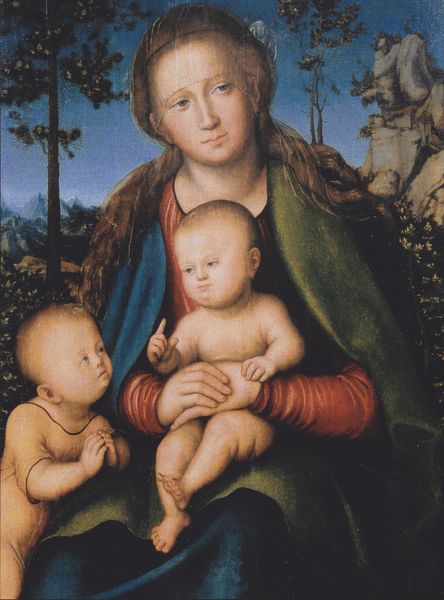
tempera, painting
#
portrait
#
tempera
#
painting
#
figuration
#
christianity
#
animal drawing portrait
#
history-painting
#
italian-renaissance
#
early-renaissance
#
christ
Copyright: Public domain
Curator: Perugino's "Madonna with Children and St. John," painted around 1485, employs tempera to depict a tender gathering of figures within a serene landscape. What’s your initial response? Editor: I’m struck by the stillness, the muted palette. The figures almost seem to exist outside of time, which gives the piece an incredibly ethereal quality. The execution appears very smooth; what kind of materiality are we dealing with here? Curator: As mentioned, Perugino used tempera paint. It was an interesting choice, setting the stage to think about his status as one of the most important artists in the Early Renaissance, whose exploration of classical ideals greatly defined his time. One that should definitely be understood from the religious beliefs and power structures during that period. How does this context shape your understanding? Editor: Well, understanding the choice of tempera is pivotal, because this affects not only the final aesthetics of the piece—the matte surface, the precise detail—but the production of it. It tells a story of craft and intensive labour. There's a strong argument to say it deliberately contrasts the divine subject with highly accessible means of production, highlighting its wide dissemination in the period. Curator: The choice of portraying these religious figures as so undeniably human—both serene and contemplative —must also speak to its cultural relevance in its day. You’re nudging at wider consumption, I feel, perhaps not just limited to the elites. It asks questions of the church, certainly of gender. There’s a pronounced intimacy within the relationships depicted. Editor: Exactly! And speaking to that, how interesting is the flatness! It almost seems like this piece blurs lines, inviting wider participation from artisans that previously were thought secondary, yet key to achieve this very intimacy with his audiences! How do you think we make sense of this? Curator: This blending suggests Perugino’s subtle dialogue about access to religious sentiment. Looking closer at the landscape might shed further light on the function and broader intersectional reach this piece was capable to suggest for his commissioners and his viewership. Editor: It has indeed provided plenty to think about, offering us both visual and conceptual substance that questions many conventional assumptions and values. Curator: I agree; through a study of both artistic technique and underlying philosophies, we gain an incredibly intimate understanding of Perugino and his cultural environment.
Comments
No comments
Be the first to comment and join the conversation on the ultimate creative platform.
